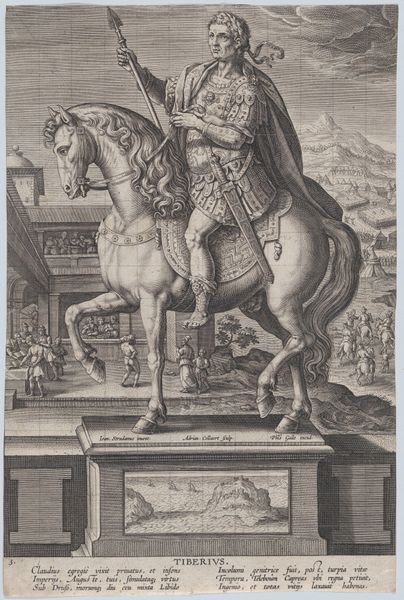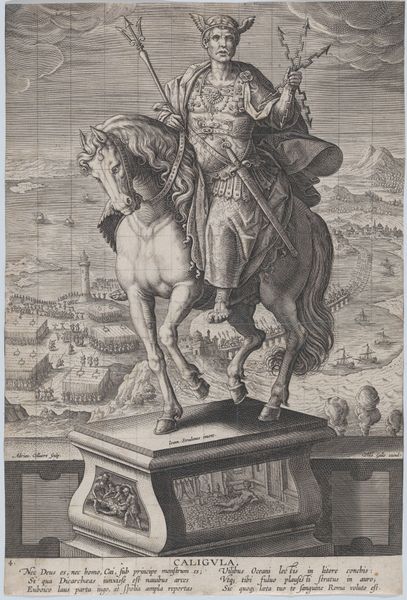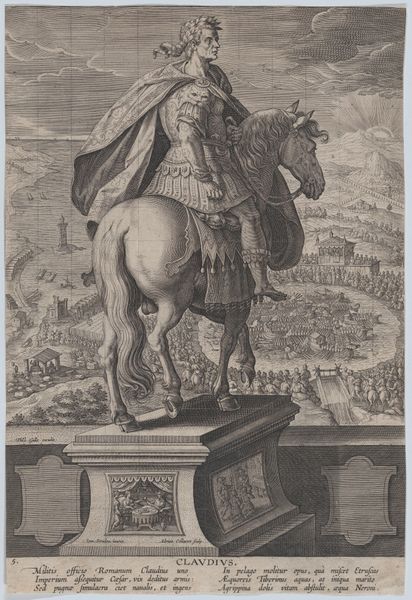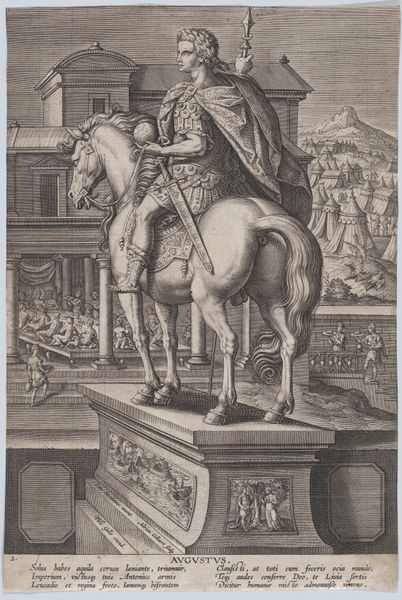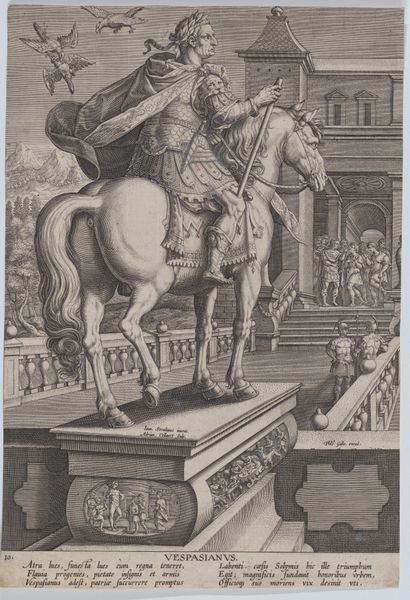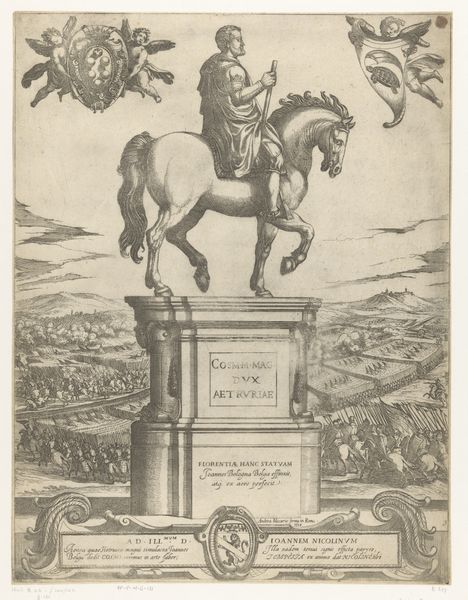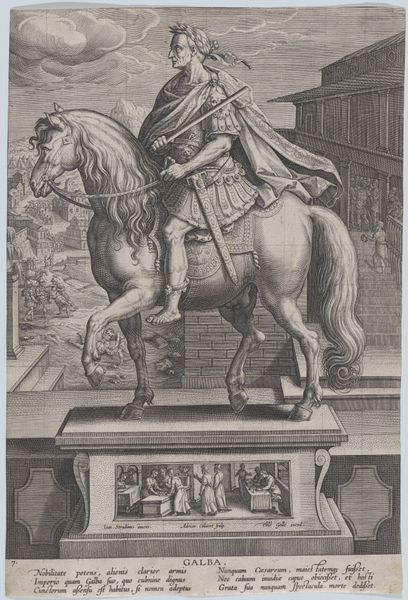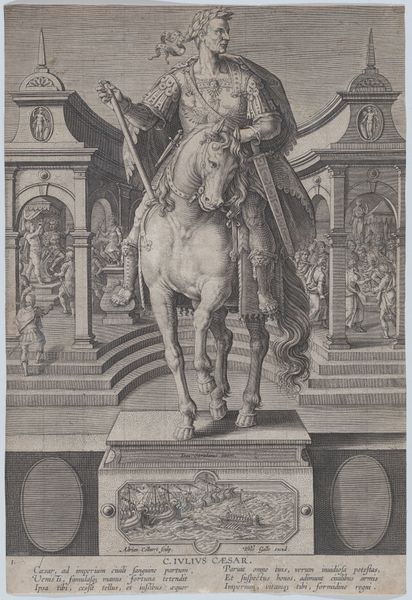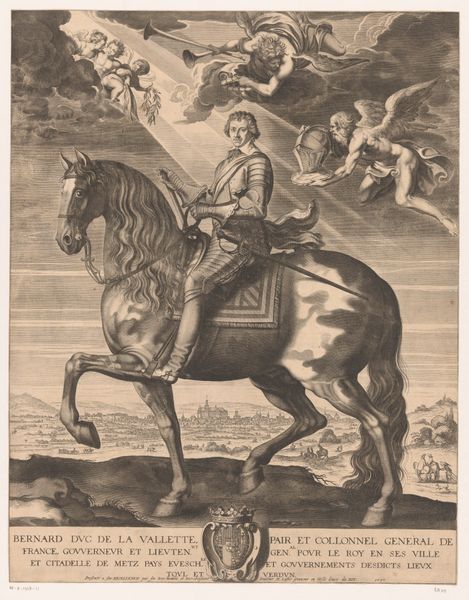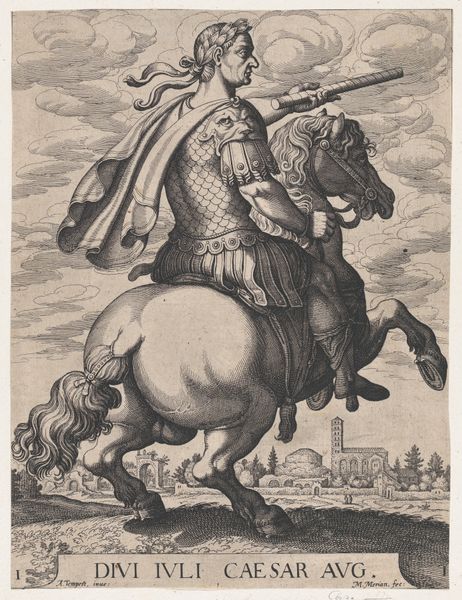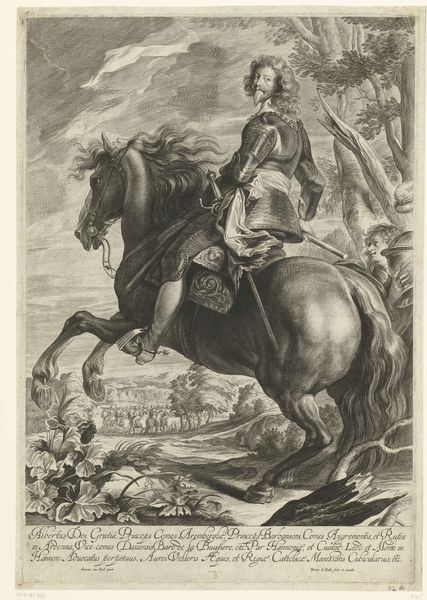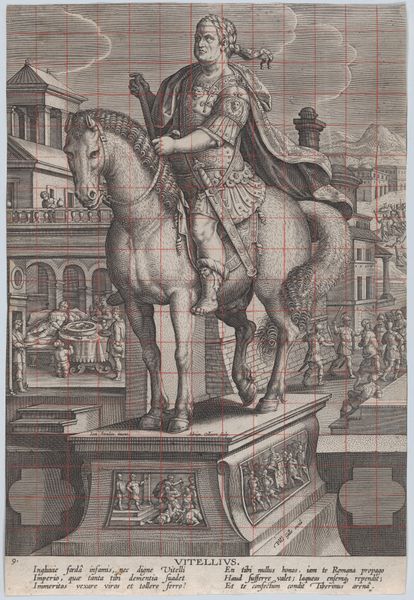
Plate 11: equestrian statue of Titus, seen three-quarters to the right, Mount Vesuvius erupting at left in the background, from 'Roman Emperors on Horseback' 1582 - 1594
0:00
0:00
drawing, print, engraving
#
portrait
#
drawing
# print
#
mannerism
#
ancient-mediterranean
#
horse
#
men
#
cityscape
#
history-painting
#
engraving
Dimensions: Sheet (Trimmed): 12 3/4 × 8 9/16 in. (32.4 × 21.7 cm)
Copyright: Public Domain
This engraving by Adriaen Collaert, presents an equestrian statue of Titus against the backdrop of Mount Vesuvius erupting. The stark contrast of the black ink on the white sheet immediately draws us into a world defined by line and form. Consider how the artist uses the detailed, almost obsessive, cross-hatching to create depth and texture. Notice the intricate details of Titus's armor, the horse's musculature, and the distant city, all rendered with the same meticulous care. This egalitarian treatment suggests a world where human achievement and natural disaster are given equal weight. The statue itself, perched on an ornate pedestal, implies permanence and triumph, yet the erupting volcano subverts this sense of stability. Collaert uses semiotic devices to construct a scene ripe with tension. Titus, a symbol of Roman power, is juxtaposed with Vesuvius, a symbol of nature's chaotic force. This destabilizes any straightforward reading of the image. The eruption could symbolize the transient nature of power, or perhaps the inherent instability of the natural world. The formal qualities of Collaert’s work serve as a reminder of the complex interplay between order and chaos. It's a testament to the power of art to provoke questions rather than provide simple answers.
Comments
No comments
Be the first to comment and join the conversation on the ultimate creative platform.
